There are two disadvantages to ordering gadgets (the fine and expensive kind) sight-unseen. The first is that whole, highly overrated ‘patience’ thing. Sometimes I can be as patient as a Zen monk. And sometimes (like when I’m waiting for a new gun) I want my instant gratification now. The second disadvantage is that you can’t hand-pick your cherries when you buy them off the truck; and you won’t know exactly sure what you’re getting until you get it. Sometimes your new pride and joy falls a little short of your high expectations, even when it’s a hand-made American icon like a Gibson Les Paul. Or a Marlin lever-action rifle . . .
My Marlin 1894C .357 arrived at my gunsmith’s shop on Friday morning. I’d been looking forward to this day for weeks. I was corroded with jealousy when Robert’s rifle arrived a few days before mine. After learning about the disintegration of his rifle’s buttstock, I wasn’t so jealous anymore. When my own rifle arrived, I inspected it very carefully before signing the ATF transfer application.
I’m relieved to report that unlike Robert’s rifle, my Marlin’s buttstock appears to be in no danger of snapping off. The lever action is a bit stiff but entirely workable. It actually cycles with exactly the same stiff, solid feel of my old Marlin Model 30, a gun I bought for a song and deeply regret selling. Unfortunately, the last 30 years haven’t improved Marlin’s trigger pulls: 1894’s trigger is heavy and gritty, just like the old Model 30’s.
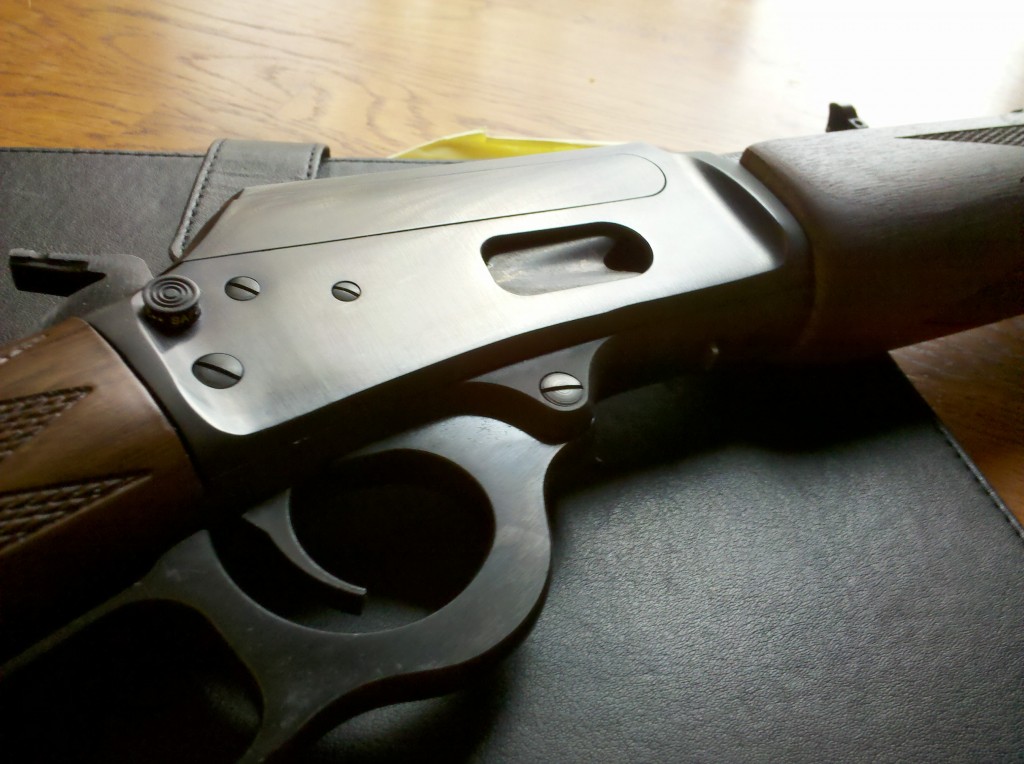 All of the metal parts fit together smartly and the exterior metalwork shows a high degree of craftsmanship, with a few infuriating exceptions. The magazine tube, barrel, lever and receiver sides are deep, even satin-blue, even where they’re hidden under the fore-end wood. The top, bottom and rear of the receiver are a dark matte finish; so are the upper and lower tangs.
All of the metal parts fit together smartly and the exterior metalwork shows a high degree of craftsmanship, with a few infuriating exceptions. The magazine tube, barrel, lever and receiver sides are deep, even satin-blue, even where they’re hidden under the fore-end wood. The top, bottom and rear of the receiver are a dark matte finish; so are the upper and lower tangs.
The metal finish is really nice; it’s a shame that someone at the factory had to dig the head of their screwdriver into this lovely dark bluing, while chewing up the front barrel band screw with an over-sized screwdriver. He was probably the same guy who stripped the head of the magazine cap screw.
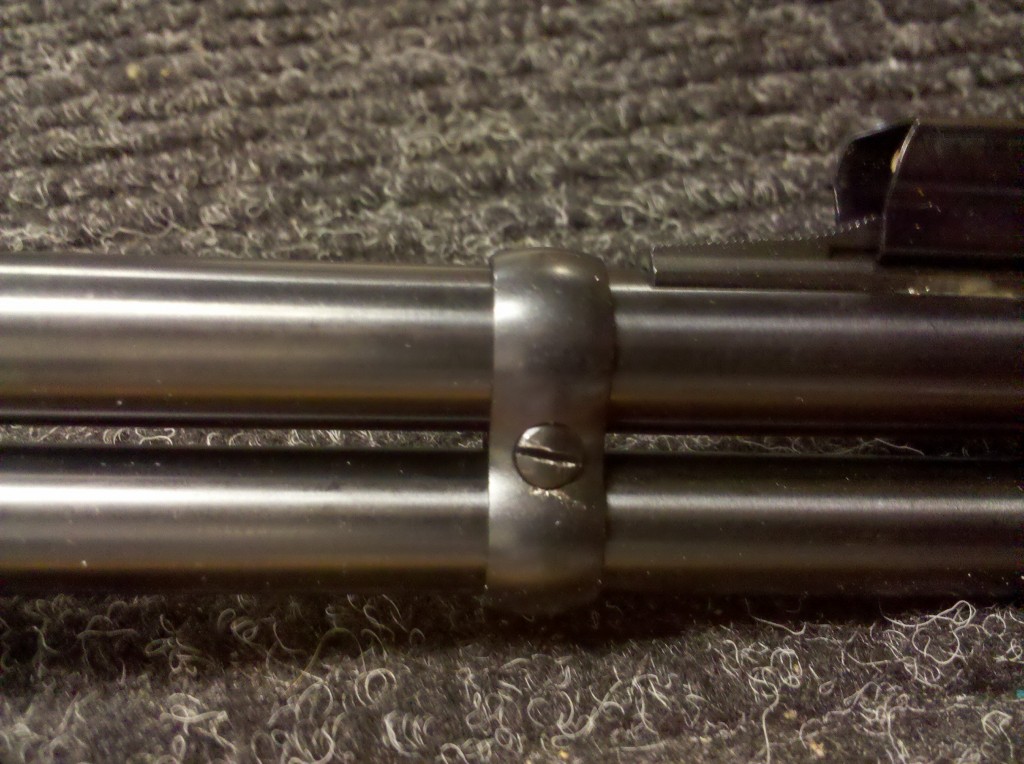 For a rifle of this price and heritage, the technician responsible should be using the right tools for the job. He should have replaced the damaged parts and screws before passing this rifle down the assembly line.
For a rifle of this price and heritage, the technician responsible should be using the right tools for the job. He should have replaced the damaged parts and screws before passing this rifle down the assembly line.
Note to Bubba gunsmiths: Marlin slot-head screws have very thin slots, so don’t try to use your Leatherman screwdriver on them. Even my gunsmithing screwdriver set only had one blade thin enough. It fit into the thin slot-heads, but it was really much too narrow for most of the Marlin’s screws and I had to use it gingerly to avoid making the same mistake as the factory guy.
So the 1894c’s metalwork is basically stunning, except where one assembler literally screwed up. The woodworking, unfortunately, follows the same narrative. The buttstock is an absolutely gorgeous hunk of figured walnut with a satin finish. This grade of wood might look right at home on any rifle costing less than $1,000.00, but it is not properly fit to the receiver.
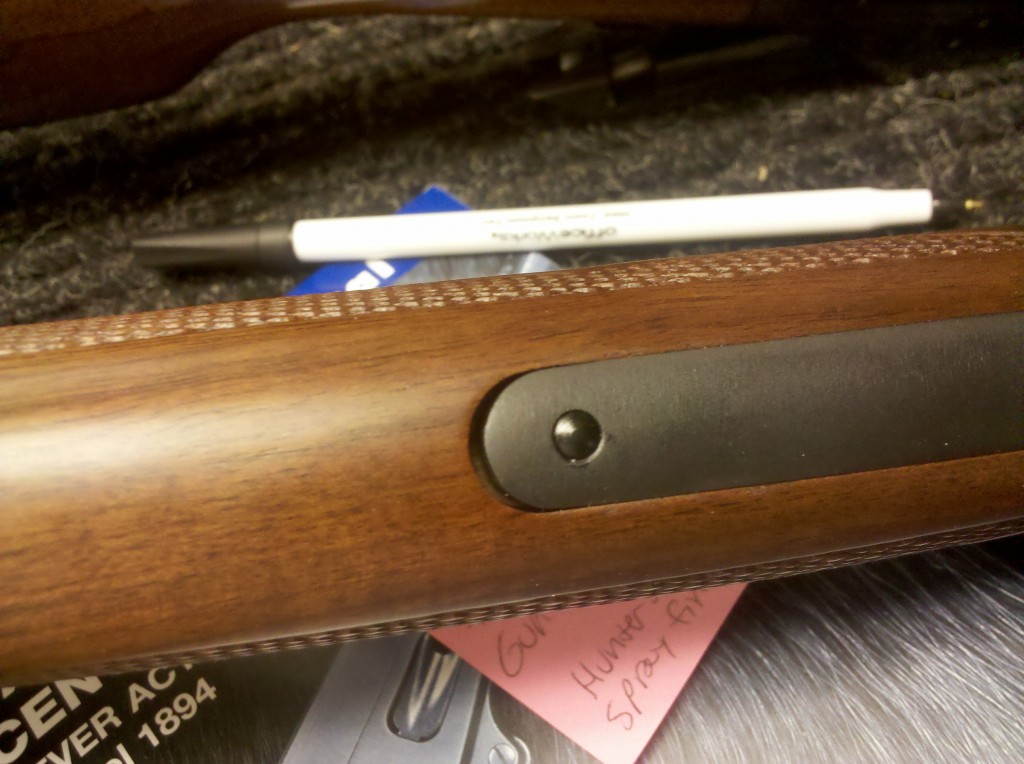 The above photo shows the bottom tang, with a nearly 2mm gap between the end of the tang and the end of the tang groove. The video below shows that the buttstock isn’t even remotely flush against the rear of the receiver, because the mounting holes in the grip are drilled at least 1mm too far forward. This may be a lesser example of the same stock problem that crippled Robert’s 1894C. I hope I never find out.
The above photo shows the bottom tang, with a nearly 2mm gap between the end of the tang and the end of the tang groove. The video below shows that the buttstock isn’t even remotely flush against the rear of the receiver, because the mounting holes in the grip are drilled at least 1mm too far forward. This may be a lesser example of the same stock problem that crippled Robert’s 1894C. I hope I never find out.
[HTML1]
Come on, Marlin, you’ve known how to make lever-action rifles for more than 120 years! Even though it traces its lineage through the 336 and back to the Marlin Model of 1893, you don’t call my rifle the “1894” for nothing. This kind of wood-to-metal fit is disappointing in a classic rifle with the such a long and respected history.
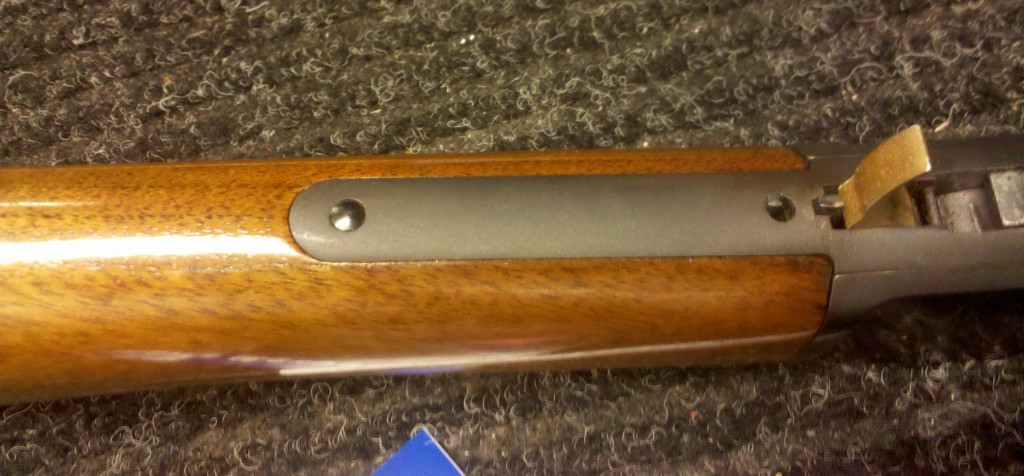 This photo shows us how wood-to-metal fitting looks when Marlin gets it right, as they used to. This is the lower tang from a 1960s-vintage takedown Marlin Model 39, courtesy of my gunsmith Les at Clark County Gunsmithing. As Les pointed out, you can’t slip a piece of paper between the steel and the walnut of a properly-fitted stock.
This photo shows us how wood-to-metal fitting looks when Marlin gets it right, as they used to. This is the lower tang from a 1960s-vintage takedown Marlin Model 39, courtesy of my gunsmith Les at Clark County Gunsmithing. As Les pointed out, you can’t slip a piece of paper between the steel and the walnut of a properly-fitted stock.
And you definitely shouldn’t be able to use it as a business-card holder. It does make a very bold fashion statement, but leaving a rifle pointed towards prospective clients is probably bad for business.
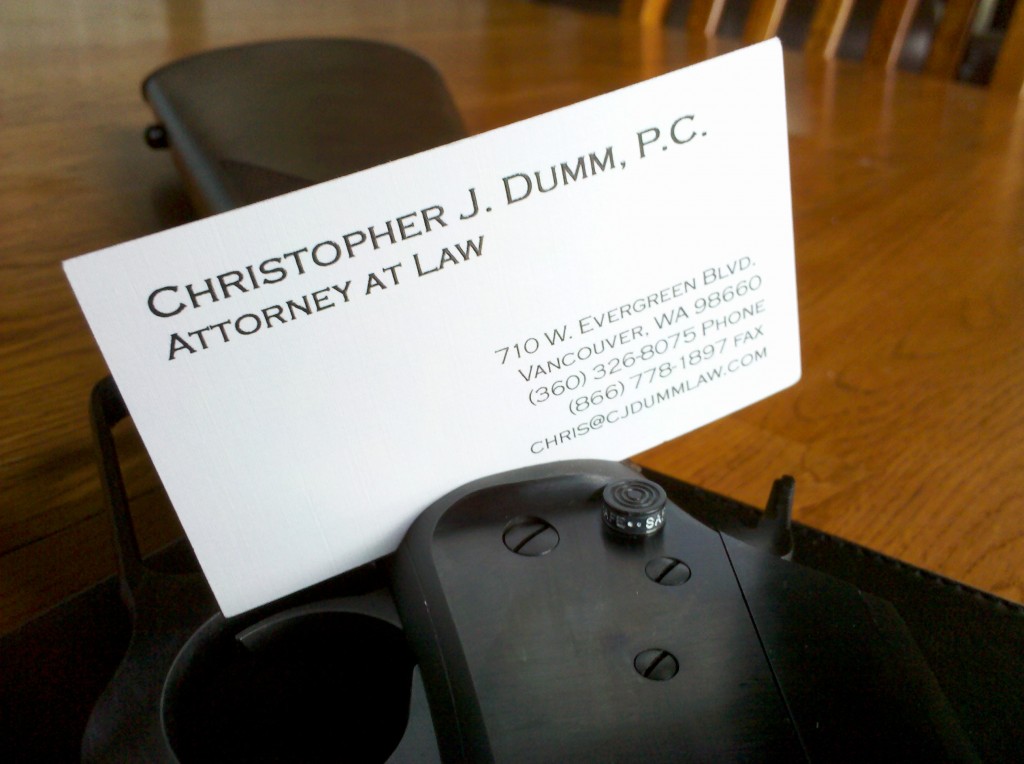
The poorly-fitting buttstock is only half of the stock’s problems. As the videos indicate, another technician completely forgot to put the satin finish on my rifle’s fore-end wood.
It’s a nicely cut and checkered piece of walnut, and the wood-to-metal finish is (ironically) outstanding, but it doesn’t look or feel like the buttstock does. I’m sure it will buff up beautifully once I give it a coat of “Gun Sav’r Hunter Satin” spray finish from Brownell’s, but isn’t the factory supposed to handle that? If I wanted to finish a rifle myself, I would have bought a blackpowder rifle kit and taken it back to Mr. Richardson’s eighth-grade wood shop.
If Robert’s rifle qualifies as an ‘Epic Fail’ on the safety and functionality scale, I suppose mine rates a ‘Mild Disappointment’ on the cosmetic scale. Even with these blemishes it still takes the prize as the most beautiful firearm I have ever owned.
Watch this space as for the shooting and handling reviews. It’s an odd comparison, but this gun shoulders and points like a properly-fit shotgun: instantly and instinctively. My original plan was to put a scout rail and Leupold scout scope on this rifle, but it handles so quickly and perfectly that I’m having second thoughts.
Watch this space.

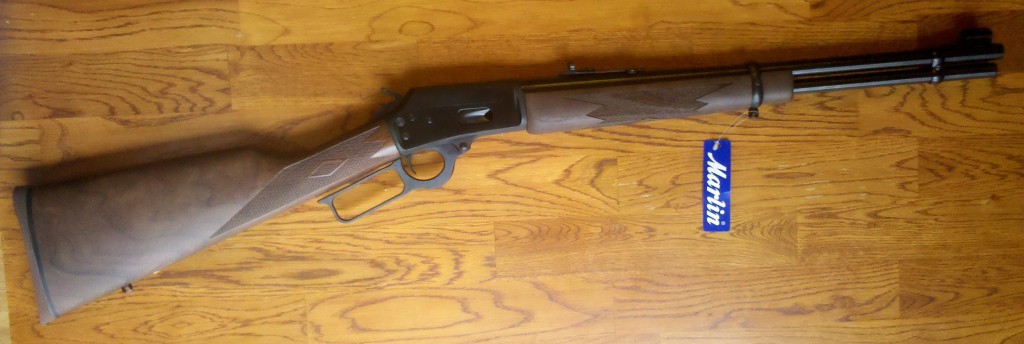



Disappointing to see the lack of QC; hopefully cosmetic flaws aren’t indicative of mechanical ones also. There definitely seems to be a lot more negative going on since New Haven shut down.
This is why I was so happy to buy my Marlin .45-70 used from the owner of a local gun shop. He had already taken a grizzly and a cape buffalo with it. The handling and fit is perfect-sort of like finding a cherry Service Six or a Detective Special. Now to get a .45-70 revolver for redundancy when hunting…
When Leo Fender sold his eponymous company to CBS Musical Instruments, the brain trust at CBS decided they could improve on his designs. So all of a sudden, Stratocaster necks were bolted-on with three screws instead of four. They claimed that this idea would allow technicians to more easily adjust the tilt of the Strat’s neck. After a while in the wild, Fender customers weren’t so easily deceived – the three bolt necks might be easier to adjust, but they needed
Roger that guitar comment; Fender isn’t the only shop with problems. The last time I acquired a legendary handmade American icon (a cherry sunburst Gibson Les Paul) an unnamed guitar distributor put me through an eight-week odyssey of production defects, complaints, shipping labels, RMAs and threatened legal action before I finally settled with them for a guitar I was happy with.
My first guitar from the distributor (let’s call them ‘Guitar Friend’) played beautifully but had a few cosmetic blemishes. Nothing major, but a $1000+ instrument should be *perfect* so I returned it. The replacement arrived two weeks later, damaged, in a partially-crushed Gibson hard case. It was a worn-out road dog, complete with finger cheese on the frets and buckle scars on the back.
I sent it back, and my next replacement was…my original Les Paul, with the same blemishes and the same serial number! I decided that the guitar gods wanted us to be together, so I extorted a nice refund from Guitar Friend and got got my now-$1600 guitar for $900.
I love my guitar, but I still grimace when I think of the PITA the distributor gave me, and I’ll never buy a guitar sight-unseen again even if it costs me extra.
Chris, I had much the same experience with a store (let’s call them “Guitar Axis”). I bought a used 5-string “Dragonfly” fretless acoustic bass guitar off eBay. The gorillas that used to work for American Tourister evidently went over to work at FedEx Ground. The headstock was neatly split through on a line that intersected three of the tuners. Sent it back – the seller was a stand-up guy, who gave me a full refund. Next went to Guitar Center…um Guitar Axis, and ordered another one. This one had a bridge saddle that was V-shaped. Curious. I reseated the bridge (I was a guitar tech in an earlier lifetime). Now the neck buzzed. It had a high spot some idiot thought they could fix by jimmying the bridge. Of course, with no contact with the saddle, the pickup didn’t pick up the 5th string. They ordered another one. THIS one was flawless.
It pays to be picky. For my hard work and aggravation, I shaved $200 off the MSRP at GC. Heh.
I need to make a correction to a comment I made on the video: the ‘extra’ sling mounting hole is an intentional style feature, not a drilling mistake. The only mistake was my mistake in calling it a mistake. Mea culpa.
You might want to see if Marlin will “make it right.” Too bad they don’t have an email address or web form to contact them.
I wonder if the “new” winchesters will be about the same.
Cerberus strikes again.
This seems like the same sloppy QC that has been dogging the Remington 870 lately.
Stick with used Marlins.
The last blue Marlin that I saw looking as bad was mounted on a fisherman’s wall.
This makes me sad. I have fond memories of a 70’s production Model 336 that I collected my first deer with. That gun belonged to my parents, I should have bought one just like it for my hunting rifle. I went with a Ruger instead, and it’s a good gun, but I’ve never enjoyed shooting it like I did that Marlin.
I think the Cerberus Remingtons and Marlins are assembled (cross threaded?) with impact wrenches by disgruntled orangutans. I’ve actually seen the barrel threads come out when the choke tubes were removed from newer 870s and 1100s. And that’s if the choke tube could even be removed in the first place; a breaker bar was needed recently to remove the choke tube from a brand new 1100. Won’t buy either brand again unless it’s a used model at least a few decades old.
Comments are closed.